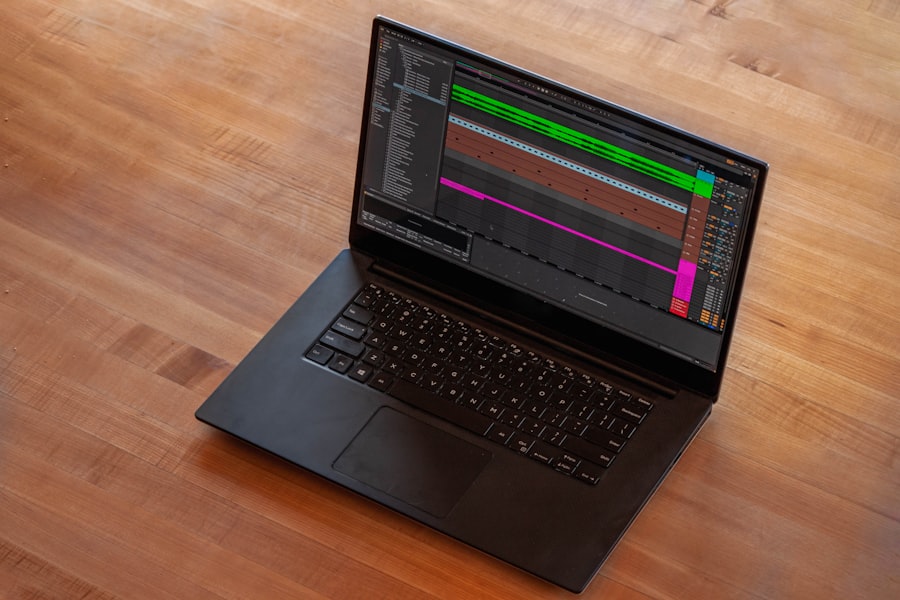In the current fast-paced and competitive manufacturing landscape, implementing a robust Manufacturing Execution System (MES) is essential for companies. MES is a software solution that enables real-time management and monitoring of production processes. It provides a centralized platform for tracking and controlling various aspects of manufacturing, including scheduling, resource allocation, quality control, and inventory management.
By utilizing an MES, manufacturers can optimize operations, enhance productivity, reduce costs, and improve overall efficiency. A key advantage of MES is its ability to offer real-time visibility into production processes. This feature allows manufacturers to quickly identify and address issues or bottlenecks, minimizing downtime and maximizing throughput.
MES also contributes to improved quality control by providing real-time monitoring of production parameters and enabling rapid adjustments to maintain consistent product quality. Furthermore, MES helps optimize resource utilization, including equipment, materials, and labor, by providing real-time data on production performance and resource usage. In summary, MES plays a crucial role in helping manufacturers achieve operational excellence and maintain competitiveness in today’s dynamic market environment.
Key Takeaways
- MES is crucial for optimizing manufacturing operations and improving efficiency
- Implementing SMS-iT can lead to improved production visibility and real-time data access
- SMS-iT offers key features like production scheduling, quality management, and inventory tracking
- Successful implementation of SMS-iT requires thorough planning and stakeholder involvement
- Overcoming challenges in implementing SMS-iT requires clear communication and training for employees
The Benefits of Implementing SMS-iT for Manufacturing Execution
Improved Operational Efficiency
One of the key benefits of SMS-iT is its ability to improve operational efficiency by providing real-time visibility into production processes. This allows manufacturers to quickly identify and address any issues that may arise, minimizing downtime and maximizing productivity.
Enhanced Quality Control
SMS-iT also helps companies improve quality control by providing real-time monitoring of production parameters and enabling quick adjustments to ensure consistent product quality.
Streamlined Production Scheduling and Resource Allocation
Another significant benefit of implementing SMS-iT is its ability to streamline production scheduling and resource allocation. SMS-iT provides advanced scheduling tools that enable manufacturers to optimize their use of resources, such as equipment, materials, and labor, to maximize throughput and minimize costs. Additionally, SMS-iT offers comprehensive inventory management functionality, allowing manufacturers to track and control inventory levels in real-time, reducing the risk of stockouts or overstock situations. Overall, implementing SMS-iT for Manufacturing Execution can help manufacturers achieve significant improvements in operational efficiency, quality control, and resource utilization, ultimately leading to increased profitability and competitiveness.
Key Features and Functionality of SMS-iT for Manufacturing Execution

SMS-iT offers a wide range of key features and functionality designed to help manufacturers optimize their production processes and achieve operational excellence. One of the core features of SMS-iT is its advanced production monitoring capabilities, which provide real-time visibility into production processes, allowing manufacturers to quickly identify and address any issues that may arise. SMS-iT also offers comprehensive quality control functionality, enabling manufacturers to monitor production parameters in real-time and make quick adjustments to ensure consistent product quality.
Another key feature of SMS-iT is its advanced scheduling tools, which allow manufacturers to optimize their use of resources, such as equipment, materials, and labor, to maximize throughput and minimize costs. SMS-iT also provides comprehensive inventory management functionality, allowing manufacturers to track and control inventory levels in real-time, reducing the risk of stockouts or overstock situations. Additionally, SMS-iT offers advanced reporting and analytics capabilities, enabling manufacturers to gain valuable insights into their production performance and make data-driven decisions to improve operational efficiency.
Steps to Successfully Implementing SMS-iT in Manufacturing Operations
Successfully implementing SMS-iT in manufacturing operations requires careful planning and execution. The first step in the implementation process is to define clear objectives and goals for the MES implementation. This involves identifying key areas for improvement, such as operational efficiency, quality control, or resource utilization, and establishing measurable targets for improvement.
Once the objectives are defined, the next step is to conduct a thorough assessment of the current state of manufacturing operations to identify any potential challenges or barriers to implementation. After assessing the current state of operations, the next step is to develop a detailed implementation plan that outlines the specific steps and activities required to deploy SMS-iT successfully. This plan should include a timeline for implementation, resource requirements, and a communication strategy to ensure all stakeholders are informed and engaged throughout the process.
Once the implementation plan is developed, the next step is to execute the plan according to the defined timeline, ensuring that all activities are completed on schedule and within budget. Finally, after the implementation is complete, it is essential to conduct a thorough evaluation of the MES deployment to measure its impact on operational performance and identify any areas for further improvement.
Overcoming Challenges in Implementing SMS-iT for Manufacturing Execution
Implementing SMS-iT for Manufacturing Execution can present several challenges that must be addressed to ensure a successful deployment. One common challenge is resistance to change from employees who may be accustomed to existing processes or systems. To overcome this challenge, it is essential to communicate the benefits of SMS-iT clearly and provide training and support to help employees adapt to the new system effectively.
Another challenge is integrating SMS-iT with existing systems or processes, such as ERP or PLM systems. To address this challenge, it is crucial to work closely with IT and operations teams to ensure seamless integration and data exchange between systems. Additionally, another challenge in implementing SMS-iT is managing the complexity of manufacturing operations, which may involve multiple sites, production lines, or products.
To overcome this challenge, it is essential to develop a comprehensive implementation plan that considers the unique requirements of each operation and ensures that SMS-iT is configured to meet specific needs effectively. Finally, another common challenge is ensuring data accuracy and integrity within the MES system. To address this challenge, it is crucial to establish robust data governance processes and controls to ensure that data entered into SMS-iT is accurate and reliable for decision-making purposes.
Best Practices for Utilizing SMS-iT in Manufacturing Operations

Defining Key Performance Indicators
One best practice is to establish clear KPIs (Key Performance Indicators) for measuring the impact of SMS-iT on operational performance. This involves defining specific metrics related to operational efficiency, quality control, resource utilization, or other key areas for improvement and regularly monitoring these metrics to track progress and identify opportunities for further optimization.
Providing Comprehensive Training and Support
Another best practice is to provide comprehensive training and support for employees using SMS-iT to ensure they understand how to leverage the system effectively. This may involve developing training programs or materials tailored to different user roles within the organization and providing ongoing support to address any questions or issues that may arise during system usage.
Continuous Evaluation and Optimization
Additionally, another best practice is to continuously evaluate and optimize the configuration of SMS-iT based on evolving business needs or operational requirements. This involves regularly reviewing system performance and user feedback to identify opportunities for improvement or additional functionality that may be required.
Measuring the Success of Implementing SMS-iT for Manufacturing Execution
Measuring the success of implementing SMS-iT for Manufacturing Execution involves evaluating its impact on key areas such as operational efficiency, quality control, resource utilization, and overall profitability. One way to measure success is by tracking improvements in operational KPIs related to production throughput, cycle times, or equipment utilization. By comparing these metrics before and after implementing SMS-iT, manufacturers can quantify the impact of the system on operational performance.
Another way to measure success is by assessing improvements in quality control metrics such as defect rates or customer satisfaction scores. By monitoring these metrics over time, manufacturers can determine whether SMS-iT has helped improve product quality and consistency. Additionally, another way to measure success is by evaluating the impact of SMS-iT on resource utilization metrics such as inventory turnover or labor productivity.
By tracking these metrics post-implementation, manufacturers can assess whether SMS-iT has helped optimize resource usage effectively. Overall, measuring the success of implementing SMS-iT for Manufacturing Execution involves taking a comprehensive approach that considers its impact on various aspects of manufacturing operations. By tracking key performance metrics related to operational efficiency, quality control, resource utilization, and profitability, manufacturers can gain valuable insights into the effectiveness of SMS-iT and identify opportunities for further improvement.
If you’re interested in learning more about how SMS-iT can revolutionize your customer relationship management, check out this article on the SMS-iT blog. It provides valuable insights into how SMS-iT can improve efficiency and productivity in your CRM system.
FAQs
What is a manufacturing execution system (MES)?
A manufacturing execution system (MES) is a software solution that is used to track and manage the production process on the factory floor. It provides real-time information about the status of production orders, equipment, and materials, and helps to optimize production processes.
What is SMS-iT?
SMS-iT is a robust manufacturing execution system that is designed to improve efficiency and productivity in manufacturing operations. It provides features such as real-time monitoring, production scheduling, quality control, and inventory management.
What are the benefits of implementing a robust manufacturing execution system like SMS-iT?
Implementing a robust manufacturing execution system like SMS-iT can lead to improved production efficiency, reduced downtime, better quality control, and increased visibility into the production process. It can also help to streamline operations, reduce waste, and improve overall productivity.
How does SMS-iT help with real-time monitoring?
SMS-iT provides real-time monitoring of production processes, equipment status, and material usage. This allows for better decision-making, improved resource allocation, and the ability to quickly identify and address any issues that may arise during production.
How does SMS-iT help with production scheduling?
SMS-iT helps with production scheduling by providing tools to create and manage production orders, allocate resources, and track progress against production schedules. This helps to ensure that production runs smoothly and efficiently.
How does SMS-iT help with quality control?
SMS-iT helps with quality control by providing tools to monitor and track product quality throughout the production process. It can also help to identify and address any quality issues that may arise, ensuring that only high-quality products are delivered to customers.
How does SMS-iT help with inventory management?
SMS-iT helps with inventory management by providing real-time visibility into inventory levels, tracking material usage, and providing tools to optimize inventory levels and reduce waste. This helps to ensure that the right materials are available when needed, and that inventory costs are minimized.







